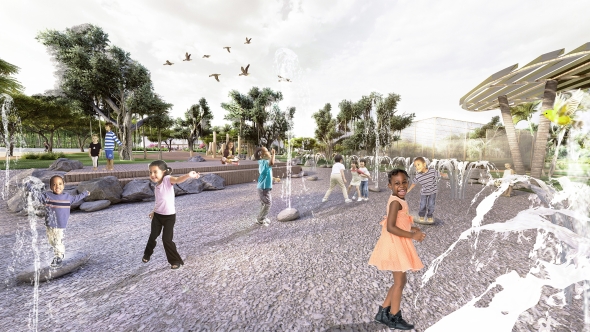The Ciudad de Panama Studio: Connecting Ecologies
This course offered participants the opportunity to explore multi-scaler connections, from a regional to a site-specific scale, and to match the environment with the contemporary urban and social demands, through an ecological/landscape-driven approach. Students considered strategies that protect and enhance the rich tropical habitats, providing continuity to the territorial habitat corridors, and how these can better integrate and contribute to the improvement of existing urban districts and emergent urban areas. Additionally, participants were asked to consider the historic evolution of the site and the adjacent areas, to address notions of cultural identity, social justice, and environmental responsibility.
The Republic of Panama – the Isthmus Nation – connects North/Central America to South America, flanked by the Caribbean Sea (Atlantic Ocean) and the Pacific Ocean, ranking as the 18th most biodiverse country in the world. The Panama Canal is still considered one of the most remarkable engineering accomplishments of the 20th Century, providing for strategic navigation and commercial routes, with profound economic and geopolitical implications. The USA built the Panama Canal, which was inaugurated in 1914, and exercised military, operational, and economic control of the Canal till 1977 when President Jimmy Carter signed a treaty recognizing Panama’s sovereignty on the Canal but giving the USA the right to operate it till December 1999.
The Site: The Albrook Air Base and Adjacent Warehouses
This former military airstrip nowadays is an airport for commercial local flights of relatively small planes, covering routes to tourist destinations. It is easily accessible from the old historic core, upscale neighborhood, and financial district. It straddles between a densely vegetated natural reserve on rolling hills, adjacent to the Canal Zone, called the Metropolitan Park, and Cerro Ancón. The Metropolitan Park can be considered the southern tip of the transoceanic ecological corridor running from the Caribbean to the Pacific. The construction of the airbase, severed Cerro Ancon that was once part of the inter-oceanic ecological corridor.
Adjacent to the airport is the largest shopping mall in the country, and a bus terminal that also serves international routes, allowing shoppers from other Central American countries to buy goods at favorable prices thanks to the Panamanian taxation policies. The area is also accessed by the terminal station of the efficient and well-kept Metro system. There is an area of many underutilized and vacant industrial warehouses that also were once part of the Canal Zone. Fast-moving vehicular corridors separate the airport, from the shopping mall, institutional buildings, low-income and social, and the historic district. Despite the rich historic legacy, protected natural areas, important mobility infrastructure, and amenities, the area is perceived as a quilt of urban fragments.
A new international terminal has been recently inaugurated at Tocumen Airport, the country’s main air transportation facility, located in the west of the city; and the Metro system has been extended to serve it. The limited use of the Albrook airport and the new transportation infrastructure have resulted in recent pressure to close it down, and to tap the potentials of the area, opening the site to real estate-driven operations, taking advantage of the large tract of flat land, in single public ownership, and its strategic location.









